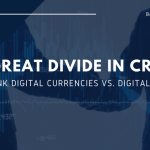Emerging markets are driving crypto adoption, propelled by a combination of factors, including lack of trust in local monetary policy, unbanked masses experiencing their initial joys of modern finance, and the rise of mobile banking. As such, transition to a digital currency is not only easier but is often more reliable than depending on a traditional fiat currency. In many cases, it’s why developing nations are adopting cryptocurrencies at a much faster rate than more developed nations.
The rise in developing countries’ use of digital currencies is countered by a growing interest from governments — both in emerging markets and developed nations — to establish a central bank digital currency. This growing global crypto adoption trend is gaining momentum along with the rise of this asset class, driven by a combination of factors: capital exchange controls, communications, media censorship, and blatant financial repression. Very few citizens have faith in their national financial systems. Citizens around the world are starting to look for ways to circumvent those systems.
Governments are naturally attempting to get in front of this decentralized, borderless option by implementing their own digital options, known as central bank digital currencies (CBDC). In many cases, this calculated response to citizens’ preferences results in competing cryptocurrencies. These dual systems, legitimate and illegitimate, will continue to foster ongoing skirmishes at points of entry to this new international financial system.
Take Ethiopia, for example. Wracked by civil war and internal conflicts between rival tribes and ethnic groups, the current government, led by controversial Prime Minister Abiy Ahmed, has dreams of a “greater Ethiopia” – transforming this hodgepodge country into a more unified and modern nation. We often think of blockchain/crypto as an inherently decentralizing force. Ethiopia’s government is using its relationship with the blockchain platform Cardano to do the exact opposite – to centralize government control over the country. To be sure, Ethiopia hasn’t adopted a cryptocurrency itself (yet) – but it has partnered with IOHK, the company behind Cardano and the cryptocurrency ADA, to create a pilot program that would register and track the performance of Ethiopian students across the country. The Ethiopian government is betting that onboarding everyone on the same network is the first step towards building a more coherent national identity. Since Ethiopia is currently roughly 75 percent unbanked, one can imagine a government-backed digital currency, or perhaps even Cardano’s currency, ADA, eventually stitching together a more coherent and single, cohesive monetary and fiscal framework for the country as well.
Crypto and blockchain can be truly disruptive and revolutionary in emerging countries such as Ethiopia – where geography, history, power, and conflict all hold back the potential of more than 100 million people.
Turkey provides another example of the struggle between dual systems. Crypto has recently enjoyed a trading boom in Turkey – that is, until the Turkish government announced a ban on Bitcoin and other ledge-based cryptocurrencies to purchase goods and services. Turks embracing cryptocurrency speaks volumes about how cryptocurrency is most attractive in emerging markets –and about how thinly stretched the Turkish government has become.
For years, under the mercurial stewardship of President Recep Tayyip Erdoğan, Turkey has debased its currency, setting off an emerging markets currency crisis in 2018. There is a method to Erdoğan’s madness: he is fashioning Turkey to suit his dream for the country. To accomplish this, he needs economic growth and has continually robbed Peter to pay Paul – all in U.S.-denominated debt. Little wonder Turkish citizens want their money out of the lira – and therefore out from the Turkish government’s clutches. Here is a government mismanaging a currency for explicitly geopolitical ends, at the expense of the individual. Turkey’s geopolitics have set it on a collision course with cryptocurrency trading. If history is any indication, this is a fight the Turkish government cannot win.
And then there’s China. China’s plans to accelerate the “dual circulation” strategy — national growth and international influence — by relying on the success of digital yuan experiments. China’s history of strict capital controls and state-managed capitalism make cryptocurrency an alluring value store for China’s burgeoning middle class. China’s digital RMB is how the Chinese Communist Party hopes to combat the allure of alternative, unregulated cryptocurrencies, while simultaneously cementing international Chinese financial influence.
To that end, the People’s Bank of China (PBC) is leading the way in designing productive public-private partnerships among commercial banks and technology firms, effectively strong-arming competing cryptocurrencies from these lucrative markets. Chinese have adopted controversial cryptocurrencies like Tether and contributed to the growth of market caps. Recently, China reaffirmed its position on non-state-sponsored cryptos by explicitly banning financial institutions and payment companies from providing crypto-related services. The goal is that the government-led increased velocity of the yuan domestically will send positive signals abroad and attract the attention of investors hunting for promising growth prospects. Furthermore, fintech patents filed by the Chinese will indirectly shepherd visions for global digitization of fiat currencies, such as the U.S. dollar.
As cryptocurrencies continue to gain in popularity, particularly in emerging markets, the rise of a dual system must be on every investor’s radar. Investors should watch for the legitimate adoption of particular cryptocurrencies by governments and outright bans of crypto in order to protect their current assets or shift into the cryptocurrencies most likely to prevail in the developing skirmish.
Nikolas Joyce is CIO of The Strategic Funds.
Now I’m sharing my trades as I make them with Benzinga Options. And I want you to join me for the ride.



